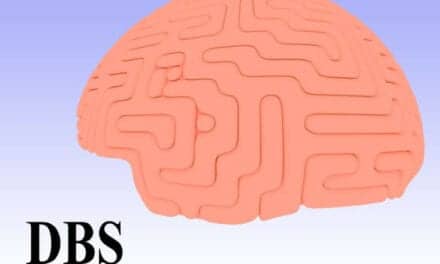Physical symptoms of Parkinson’s disease were improved by an ultrasound treatment in a clinical trial.
Patients with Parkinson’s disease significantly improved their tremors, mobility, and other physical symptoms after having a minimally invasive procedure involving focused ultrasound, according to a study published in the New England Journal of Medicine.
The clinical trial was led by researchers at the University of Maryland School of Medicine (UMSOM). It involved 94 Parkinson’s disease patients randomly assigned to undergo focused ultrasound to ablate a targeted region on one side of the brain or to have a sham procedure.
Nearly 70% of patients in the treatment group were considered successful responders to treatment after three months of follow-up, compared to 32% in the control group, who had an inactive procedure without focused ultrasound.
Two-thirds of those who responded initially to the focused ultrasound treatment continued to have a successful response from the treatment a year later.
Patients were treated at the University of Maryland Medical Center (UMMC), the academic flagship hospital for the University of Maryland Medical System.
“These results are very promising and offer Parkinson’s disease patients a new form of therapy to manage their symptoms. There is no incision involved, which means no risk of a serious infection or brain bleeding,” said corresponding study author Howard Eisenberg, MD, the Raymond K. Thompson Professor of Neurosurgery at UMSOM and a neurosurgeon at UMMC.
About 1 million Americans have Parkinson’s disease, a neurodegenerative disorder that affects brain cells or neurons in a specific area of the brain that produces the brain chemical dopamine. Symptoms include shaking, stiffness, and difficulty with balance and coordination.
Other treatments for Parkinson’s include medications and deep brain stimulation (DBS) from surgically implanted electrodes. Medications can cause involuntary, erratic movements called dyskinesia as doses are increased to control symptoms. Usually offered when medications fail, DBS involves brain surgery to insert the electrodes through two small openings in the skull. The procedure carries a small risk of serious side effects, including brain hemorrhage and infection.
“Our study will help doctors and patients make an informed decision when considering this new treatment modality to help better manage symptoms,” said study co-author Paul Fishman, MD, PhD, professor of Neurology at UMSOM and a neurologist at UMMC. “But it’s important for patients to realize that none of the treatments currently available will cure Parkinson’s disease.”
Focused ultrasound is an incision-less procedure performed without anesthesia or an in-patient stay in the hospital. Patients, who remain fully alert, lie in a magnetic resonance imaging (MRI) scanner, wearing a transducer helmet. Ultrasonic energy is targeted through the skull to the globus pallidus, a structure deep in the brain that helps control regular voluntary movement. MRI images provide doctors with a real-time temperature map of the area being treated to precisely pinpoint the target and to apply a high enough temperature to ablate it. During the procedure, the patient is awake and provides feedback, which allows doctors to monitor the immediate effects of the tissue ablation and make adjustments as needed.
The device, called Exablate Neuro, was approved over a year ago by the US Food and Drug Administration (FDA) to treat advanced Parkinson’s disease on one side of the brain.
The procedure is now widely available at the University of Maryland Medical Center (UMMC). However, it is not yet covered by insurance, including Medicare, so patients must pay out of pocket for the procedure.
“Focused ultrasound is only approved by the FDA to treat one side of the brain in Parkinson’s disease patients, so it may be more appropriate at this time for patients with symptoms predominantly on one side,” said study co-author Vibhor Krishna, MD, a professor of neurosurgery at the University of North Carolina, Chapel Hill.
Patients enrolled in the trial had moderate Parkinson’s who were not responding well to medications. They were treated with one session of focused ultrasound on the side of their brain that controlled the side of their body where symptoms were more severe.
The study was designed as a crossover trial, where 25 patients in the control group were offered the active treatment three months after their sham procedure; 20 out of 25 opted to have the focused-ultrasound treatment and experienced similar benefits as the initial treatment group.
Those in the treatment group had an immediate improvement of at least three points on a standard assessment compared to a 0.3-point improvement in the control group.
They also experienced relief from the side effects of Parkinson’s medications. They were assessed again at 3 months and 12 months. Patients will continue to be followed for five years to evaluate how long the treatment lasts and the progression of the disease.
Adverse events from the procedure included headache, dizziness, and nausea that resolved within a day or two of treatment. Some patients experienced mild side effects from the focused ultrasound treatment, including slurred speech, walking issues, and loss of taste, that usually resolved within the first few weeks.
Photo 132829520 © Siarhei Yurchanka | Dreamstime.com





